Smyrna Centenary
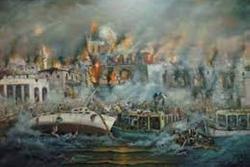 The month of September marks the 100th Anniversary since the 'Smyrna Catastrophe', when Ottoman Greeks and Armenians were forced to flee the cosmopolitan city of Smyrna due to a fire set by Turkish forces led by Mustafa Kemal Pasha. It was an event of such enormous importance for modern Greece, adding yet another unforgettable and tragic milestone to its long history. A terrifying blaze, called the 'Great Fire of Smyrna' destroyed much of the city, causing the majority of Greeks in Asia Minor to flee their burning homes and seek shelter primarily within Greece, but also in other countries. Historians of the time, taking countless eye witness and written accounts of the event, have agreed that Turkish mobs, including military personnel, set the Armenian and Greek sections of the city on fire.
The month of September marks the 100th Anniversary since the 'Smyrna Catastrophe', when Ottoman Greeks and Armenians were forced to flee the cosmopolitan city of Smyrna due to a fire set by Turkish forces led by Mustafa Kemal Pasha. It was an event of such enormous importance for modern Greece, adding yet another unforgettable and tragic milestone to its long history. A terrifying blaze, called the 'Great Fire of Smyrna' destroyed much of the city, causing the majority of Greeks in Asia Minor to flee their burning homes and seek shelter primarily within Greece, but also in other countries. Historians of the time, taking countless eye witness and written accounts of the event, have agreed that Turkish mobs, including military personnel, set the Armenian and Greek sections of the city on fire.
Smyrna was undoubtedly one of the wealthiest cities, not only in the Ottoman Empire but anywhere in Europe. The city was home to one of the largest populations of Greeks and Armenians in the vast Ottoman Empire. Together, they constituted the Christian community of the city, which lived peacefully side by side with the Muslim and Jewish communities for centuries. However, politics and the competing interests of the main global powers, alongside the rising tide of nationalism and the outcome of the First World War, were the factors that determined the fate of Smyrna and its citizens for the rest of the 20th century and beyond. As part of the Greco-Turkish War, which raged from 1919 to 1922, the Royal Hellenic Army occupied Smyrna on 15th May 1919. After major military and political errors made by the Greek Government, the Turkish army regained control of the city on 9th September 1922.
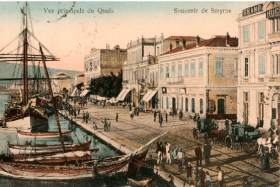
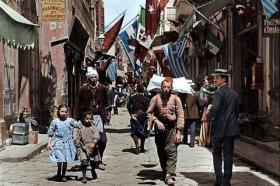
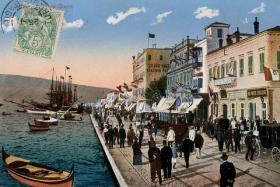
Eyewitness reports state that the 'Great Fire of Smyrna' was started on 13th September 1922, and lasted for approximately nine full days, until 22nd September. The fire's results were catastrophic, the entire Greek and Armenian quarters of the city were completely destroyed. Churches, lavish villas and mansions of great architectural importance, as well as schools and entire market areas were gone forever, without a trace. The Turkish and Jewish quarters of Smyrna remained intact. Turkey continues to deny that they were responsible, claiming that it was Armenians, or even Greeks themselves, who set the city ablaze before leaving.
Some modern historians still argue that the origin of the Great Fire of Smyrna is disputable, but the honest truth about who torched Smyrna has long been evident to most serious observers. One such man was George Horton, the American Consul in the city at the time of its destruction. As we recognise the centennial of Smyrna's demise this month, it is worthwhile recalling Horton and his book, 'The Blight of Asia'. The British Consul, Harry Lamb, advised Horton against publishing his book, telling him that it was not 'expedient' nor 'obligatory' to tell the 'whole truth' about what happened. Horton disagreed, describing in his book how Kemal's gangs of nationalists burned only parts of the city as part of a 'Turkey for the Turks' policy, a scheme of genocidal homogenisation that successive Turkish governments relentlessly and continuously pursued throughout the whole of the 20th century.

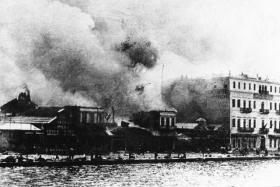
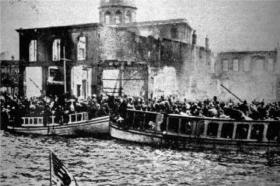
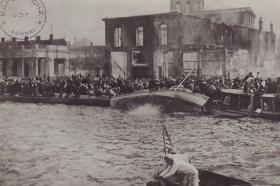

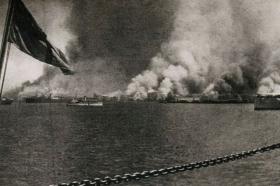
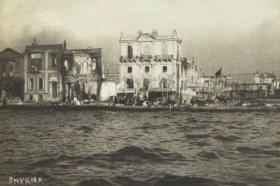
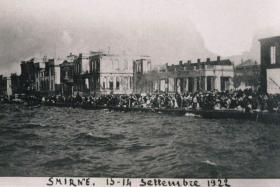

Recent authoritive histories of Smyrna detail how Kemal's soldiers burned the city's Armenian and Greek quarters as part of his plan to 'de-Christianise' Asia Minor. This had begun with the Young Turks Government that was responsible for the campaign of deportation and mass killings of Armenians, Assyrians, Pontian-Anatolian Greeks and Ottoman Christians in Asia Minor over the previous years before, during and after the First World War, culmunating in the burning of Smyrna in 1922. When they were finished, they had murdered, staightforwardly or indirectly through privasion or disease, between 1.5 and 2.5 million Ottoman Christians (Thirty Year Genocide). The world powers ignored the genocide and even covered for the Turks whilst it was going on.
Official data about the number of victims of the Smyrna Catastrophe does not exist. However, experts believe that the number is estimated between 100,000 and 150,000, including men and boys marched away from the city, never to be seen or heard of again. Many hundreds of thousands of people (mostly women and children) reached sanctuary in Greece, the only country that would accept them. The number of refugees who were eventually forced to leave Asia Minor numbered in the millions following the compulsory exchange of Greek and Turkish populations. At the Lausanne Convention in Switzerland, a treaty was signed on 24th July 1923 after eight months of negotiation by all nations involved in the conflict, bringing the Asia Minor Catastrophe to an end.
The Great Fire of Smyrna was the peak of the Asia Minor Catastrophe, bringing an end to the 3,000-year Greek presence on Anatolia's Aegean shores. Anatolia was cleansed of its Christian population by the time the Turkish Republic was founded in 1923.
Recommended reading . . .
- 'Paradise Lost - Smyrna 1922 : Destruction of Islam's City of Tolerance' by Giles Milton.
- 'Smyrna 1922: The Destruction of a City' by Marjorie Housepian Dobkin.
- 'The Blight of Asia' by George Horton.
The award-winning Greek film 'Smyrna', based on one of the 20th century's greatest humanitarian disasters, will have a one-night only nationwide premier in 700 theatres across the United States on Thursday 8th December 2022 before going on general release.